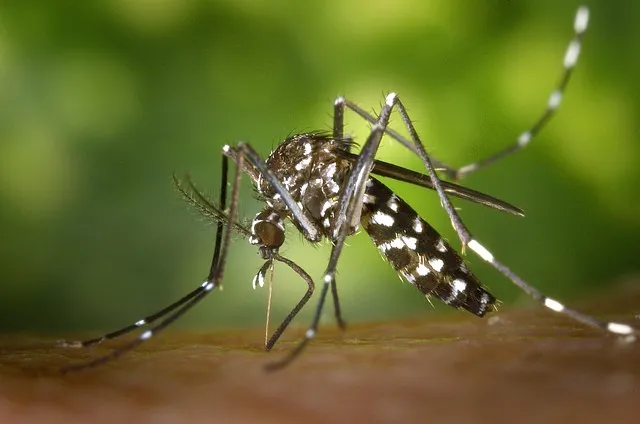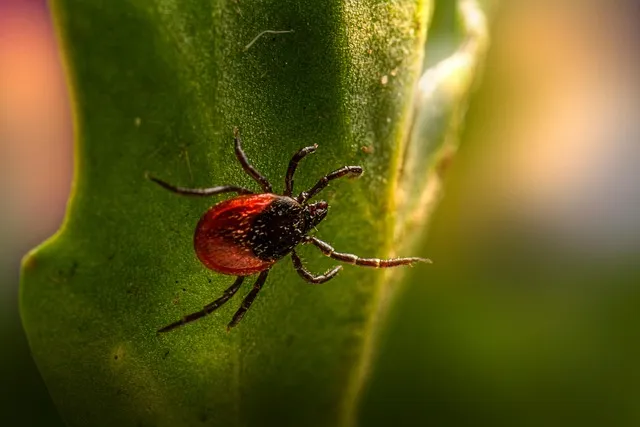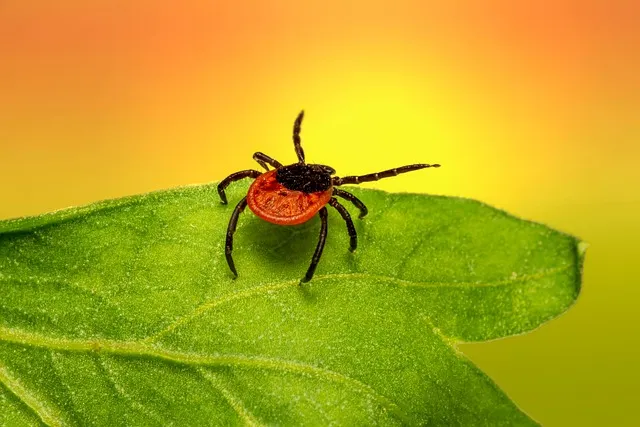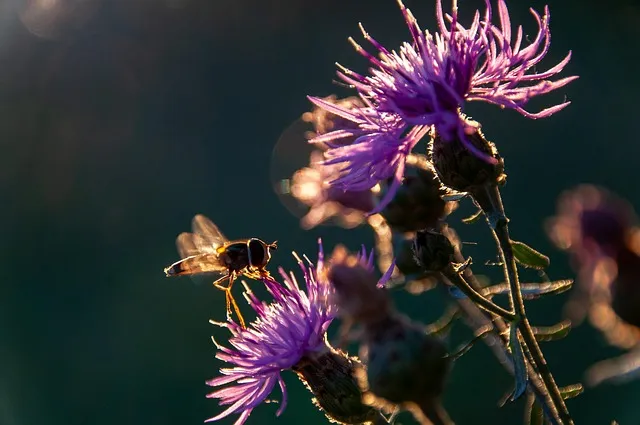Mosquitoes and ticks are persistent backyard pests that can ruin outdoor gatherings. To effectively control them, understand their behavior: mosquitoes prefer dawn/dusk, warm temps, and stagnant water for breeding, while ticks seek hosts in tall grass or under foliage. Reduce populations by emptying standing water, maintaining trimmed lawns, and using specific control products. Natural repellents like essential oils and plants provide a safer, eco-friendly alternative. Incorporate strategic design elements, such as water features and proper drainage, to further reduce insect disturbances and boost yard beauty. Mechanical methods like mosquito traps and physical controls, like netting, also prove effective. Chemical options, like permethrin and pyrethroids, should be used responsibly, following label instructions and considering rotational use to prevent resistance. Community involvement through collaboration and education significantly enhances control measures and strengthens community well-being.
Keeping your yard free from mosquitoes and ticks is essential for outdoor enjoyment. This comprehensive guide explores safe and effective methods for controlling these pests, focusing on a multi-faceted approach. We’ll delve into understanding mosquito behavior, identifying breeding grounds, and exploring natural deterrents. Learn about integrated yard design, mechanical controls, and responsible pesticide use. Additionally, discover the power of community collaboration in managing mosquito and tick populations naturally and safely.
Understanding Mosquito and Tick Behavior: Identifying Breeding Grounds

Mosquitoes and ticks are persistent pests that can quickly turn a peaceful backyard gathering into an uncomfortable experience. Understanding their behavior is half the battle won in the war against these irritating insects. Mosquitoes, for instance, are most active during dawn and dusk, preferring warm temperatures and stagnant water sources for breeding. They lay their eggs in standing water, which can be as small as a birdbath or flowerpot saucer. Regularly emptying such containers and eliminating any body of water that isn’t moving can significantly reduce mosquito populations.
Ticks, on the other hand, are primarily active during warmer months and often seek out hosts in tall grass or under foliage. They don’t require standing water to breed but instead lay their eggs in areas with high vegetation density. Maintaining a well-mown lawn and trimming back overgrown plants can create an environment less conducive to tick breeding. Additionally, using mosquito and tick control products specifically designed for outdoor use can further deter these pests from your yard, providing you and your family with a more comfortable outdoor space.
Natural Repellents and Deterrents: A Safer Alternative

Natural repellents and deterrents offer a safer alternative for mosquito and tick control in your yard. Essential oils like citronella, lavender, and peppermint are effective at keeping mosquitoes away without resorting to harmful chemicals. These natural substances can be applied directly to the skin or used in diffusers and candles to create an insect-repellent environment.
Planting certain herbs and flowers known for their mosquito-repelling properties is another eco-friendly approach. Marigolds, basil, lemongrass, and catnip are just a few examples that can be incorporated into your garden to naturally deter these pests. This method not only reduces exposure to chemicals but also adds beauty and biodiversity to your outdoor space.
Integrate Mosquito Control into Yard Design

Incorporating mosquito and tick control measures into your yard design is a proactive approach that offers both health benefits and aesthetic improvements. Start by selecting plants that naturally repel mosquitoes, such as citronella, lavender, marigolds, and catnip. These plants not only help keep mosquitoes at bay but also add color and fragrance to your outdoor space. Additionally, consider designing your yard with water features like birdbaths or small ponds, which can attract beneficial insects that feed on mosquitoes while reducing overall populations.
For more robust protection, integrate structures that prevent mosquito breeding grounds. This includes installing proper drainage systems to eliminate standing water, regularly cleaning bird feeders and other containers, and sealing off any potential habitats like old tires or discarded buckets. By combining natural repellents with strategic design elements, you create an inviting yard that enjoys fewer mosquito and tick disturbances while enhancing its overall beauty.
Mechanical and Physical Control Methods

Many homeowners opt for mechanical and physical control methods as part of their comprehensive mosquito and tick control strategy. These techniques offer effective, eco-friendly alternatives to chemical treatments. One popular mechanical approach is using mosquito traps, which attract and capture mosquitoes using various methods like carbon dioxide, light, or heat. These traps are particularly useful in reducing mosquito populations around outdoor living spaces.
Physical controls involve creating barriers to prevent mosquitoes from reaching their targets. This includes installing fine-mesh netting over patios, decks, and other areas where people gather, effectively keeping mosquitoes at bay during outdoor activities. Additionally, maintaining a trim landscape with mowed grass and cleared brush reduces hiding spots for mosquitoes and ticks, further minimizing the risk of bites.
Chemical Options for Mosquito Control: Using Pesticides Responsibly

Chemical options for mosquito and tick control can be effective, but they should be used responsibly to minimize potential harm to humans, pets, and the environment. Common pesticides like permethrin and pyrethroids are popular choices for yard treatment, targeting adult mosquitoes and their larvae. These chemicals are often applied as sprays or dunks in standing water sources, such as buckets, birdbaths, or clogged gutters, where mosquitoes breed.
When using pesticides, it’s crucial to follow label instructions strictly and consider the timing of applications. Many products are most effective when applied during peak mosquito activity, typically early morning or evening. Additionally, rotating chemical treatments can help prevent resistance buildup among mosquito populations. Always ensure proper ventilation during application and store chemicals securely out of reach of children and pets.
Community Involvement: Collaborating for Effective Mosquito Management

Community involvement is a powerful tool in the fight against mosquitoes and ticks, fostering effective mosquito and tick control. When neighbors collaborate, they can create a more comprehensive and sustainable solution to these pesky pests. By sharing resources, knowledge, and strategies, communities can develop integrated pest management plans tailored to their specific needs. This collective approach ensures that no single area is overlooked, reducing the overall population and impact of mosquitoes and ticks.
Encouraging community members to participate in mosquito control initiatives strengthens local efforts. Simple actions like removing standing water, maintaining proper landscaping, and using insect repellents can collectively make a significant difference. Additionally, communities can organize informational sessions or workshops to educate residents on pest behavior, treatment options, and prevention techniques. This collaborative spirit not only enhances the effectiveness of mosquito and tick control but also fosters a sense of shared responsibility and community well-being.
